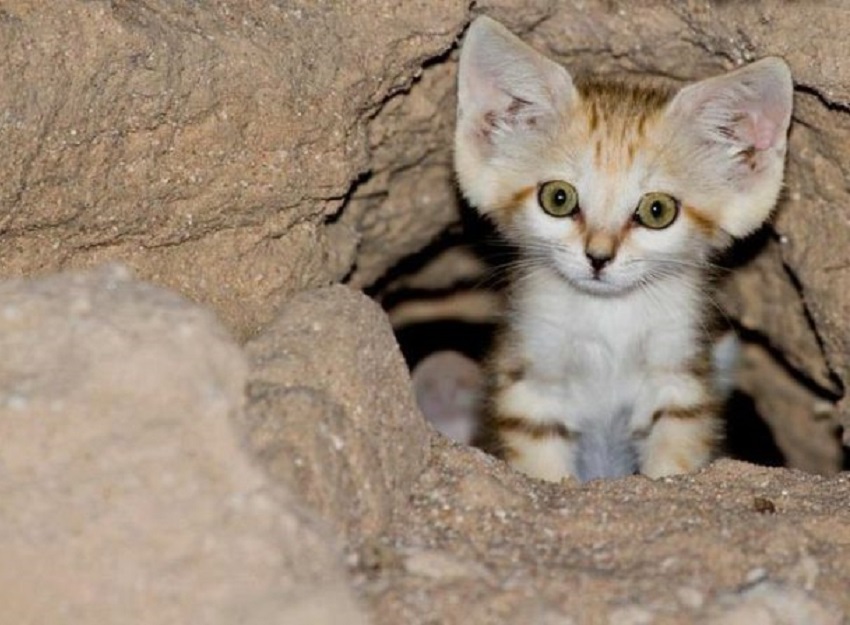Name: Sand Cat
Common name: Sand Cat
Local name: Al Qatt Al Ramli
Scientific name: Felis margarita harrisoni
Size: 65
Habitat:
Sand Cats are found in both sandy and stony desert. They prefer flat or undulating terrain with sparse vegetation, retreating into burrows during extreme conditions to avoid hunger and thirst.
Habits:
Sand Cats feed on rodents, birds, lizards and snakes, and they are generally active throughout the night, aided in hunting by their excellent night vision. They are able to survive for months on the water in their food.After a 59 – 68 day gestation, usually 3-4 – kittens are born twice per year, in a burrow or among rocks. After ten days their eyes open. They become independent at three to four months of age and start to hunt.
Distribution:
In Qatar, sightings a small numbers of Sand Cats and have been reported from sand dunes. They are endangered due overhunting and degradation of their habitat.
Description:
Length: 65-90cm, Tail length: 25-35cm, Weight: 2-5kg
The fur is a pale sandy color, with reddish brown or blackish vertical bars and spots on the flanks. The front legs have two black elbow rings. The tail has a black tip, with two to five dark rings alternating with buff bands. The belly is white. The head is broad and the ears are large, black edges and low-set. The pinnae of the ears are triangular, and the skull encases very large middle ears, giving the cat acute hearing. The long hairs growing between its toes forms a dense mat over the feet pads assisting locomotion on soft sand and helping to insulate them while moving over hot sand.







